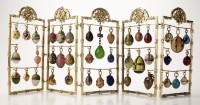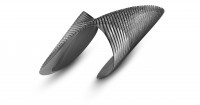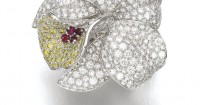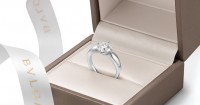Brilliant evaluation: Diamonds and light return
[portfolio_slideshow include=”536″]
How experts determine light return and diamond performance
BY ELIZABETH SCHMITT
Of the “Four Cs” in diamond grading, carat weight, clarity, and color are the easiest to determine. A diamond’s cut quality is more elusive, but it is what makes one diamond more desirable than the next.
Only an excellent cut diamond sparkles and shines to its fullest potential. A trained gemologist’s eye used to be the only way to tell if a diamond was well cut. In recent years, advancements in optical instruments specifically for diamonds means it’s easier for jewelers and customers alike to tell the cut quality of a diamond, even if it’s in another state or another country (as is often the case).
The technologies are not a replacement for an experienced gemologist’s opinion, but do help in selecting diamonds worthy of a more thorough investigation.
Light return
For round brilliant diamonds, the angle percentages on a diamond report give a gemologist enough information to reject those that are too deep to possibly give good light return. But the angles only tell part of the story. Scientists have developed various pieces of light reflector equipment, such as the FireScope, Brilliant Scope, IdealScope, to help evaluate a diamond’s light return.
The IdealScope uses red light to give the user an idea of a round brilliant diamond’s performance. The more red, the better the diamond’s light return. The more light return a diamond has, the whiter it will appear and the more brilliance, fire and scintillation it will have. IdealScope images, which can be taken with a digital camera, also give a good view of the diamond’s faceting pattern and symmetry, making it doubly useful. The equipment is portable, simple to use and easy to take images, so dealers can share IdealScope images with customers to help decide on which diamonds to view in person.
Diamond performance
Because the IdealScope is only for round brilliant diamonds, for fancy diamond shapes – princess, emerald, oval, cushion, Asscher, marquise and others – the Angular Spectrum Evaluation Tool is more useful for determining performance.
An ASET image uses red, green, blue, black and white to represent areas of the diamond with different levels of light return. Red is the brightest return, followed by green. A high-performing diamond will show a lot of red and some green. Blue denotes contrast, and a well-cut diamond will show some blue in a symmetrical pattern. Black and white represent leakage, and the more of these on an ASET, the poorer the diamond’s performance.
The pattern of colors on an ASET image also reveals both optical and physical symmetry. The American Gem Society uses ASET images to help grade the performance on diamonds, with 0 being the highest grade and 10 being the lowest.
Because the ASET shows faceting patterns and performance, it is also a useful tool for matching diamonds. “It is an invaluable tool when it comes to custom manufacturing, repair work, and matching diamonds for new inventory, such as earrings, where matching is important from both an esthetic standpoint as well as a value standpoint,” said Patrick B. Stout, Certified Gemologist Appraiser Education Services Manager for AGS in a presentation.
-October 2012








